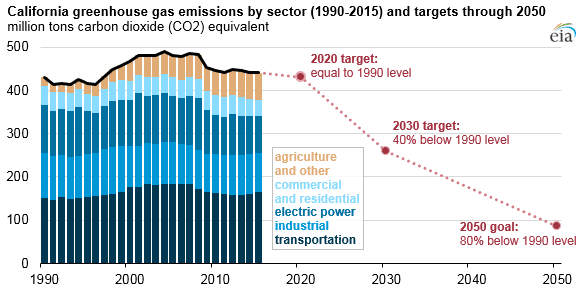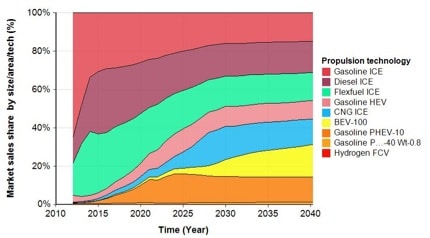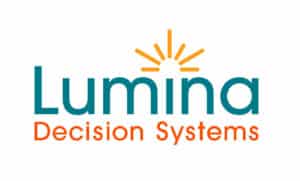

August 2019

Can California afford it’s ambitious climate policies?
In September 2018, California’s state legislature passed Senate Bill SB100, requiring that all retail electricity be carbon-free by 2045. The bill increases to 60% from 50% how much of California’s electricity portfolio will come from renewable sources by 2030. In 2017, AB398 set a new GHG target of at least 40% below the 1990 level of emissions by 2030. As of 2015, about 86% of California’s GHG emissions were related to the consumption of energy.
The 2030 target also assumes a 50% reduction in gasoline and diesel used by vehicles, and a doubling of energy efficiency in existing buildings. Is that technically and economically feasible? The state used the PATHWAYS Analytica model developed by E3 Consulting to explore scenarios to achieve these goals. They concluded that a High Electrification Scenario can meet these goals at a net cost that is “relatively small” — up to 0.5% of California’s gross state product — or could even produce a net savings of 0.1% of GSP — and that’s not counting the societal benefits of GHG reductions. (Read More)
Human intuition, decision analysis, and the value of information
Our intuitive decisions are subject to all kinds of biases and fallacies according to extensive research in the psychology of judgment. Decision analysis provides practical tools to help bring greater rationality to complex decisions.
Max Henrion, CEO of Lumina Decision Systems, reviewed the challenges of combining human intuition and decision frameworks in a talk at the Association for Computing Machinery (ACM) SF, in June, 2019. Max was awarded the Frank P. Ramsey medal for distinguished contributions in decision analysis in 2018 by the Decision Analysis Society. (Watch the video).


Tips and tricks - index-linked colors
Suppose you are modeling electricity generation and you want Hydro to be blue, Solar to be yellow, and Coal to be black in every graph that compares technologies. From a graph that uses the Technology Index for its color key, right-click on a key item or color and select “Change Series Color”. Select the colors you want for each Technology. Then select the option “To all graphs using Index Technology”. Voila! Every graph using the Technology index in its key will use the same colors. (Read more)

Help us choose the future of Analytica
We would really appreciate your ideas on new features for Analytica, and how you are using it. Next month, you’ll receive a short survey to get your feedback. We’ll be giving away copies of the book, “Uncertainty: A Guide to Treating Uncertainty in Risk and Policy Analysis” by M Granger Morgan and Max Henrion to the first 20 people who reply. Thanks in advance for your help!
Dan Violette Wins 2019 IEPEC Lifetime Achievement Award
On August 20th, Lumina’s Dan Violette, PhD was awarded the 2019 Lifetime Achievement Award by the International Energy Program Evaluation Conference (IEPEC) board. This biennial award is given to a member of the evaluation community who has consistently provided significant contributions to the energy services field. The award was presented at the annual IEPEC conference in Denver, Colorado.
“I’m delighted to see Dan recognized by his peers in the industry (yet again) for his outstanding leadership on how to evaluate and plan energy systems. Lumina is fortunate to have someone with Dan’s experience and vision working with us.”, said Max Henrion, Lumina CEO. (Read More)


26010 Highland Way
Los Gatos, CA 95033.
(+1) 650-212-1212
Lumina seeks Senior Consultant
Lumina is growing. We are looking to add a Senior Consultant, with experience in working with clients and building decision-support tools, especially for applications in energy and environment. If you think you could be a good fit, please drop us a line at [email protected].

